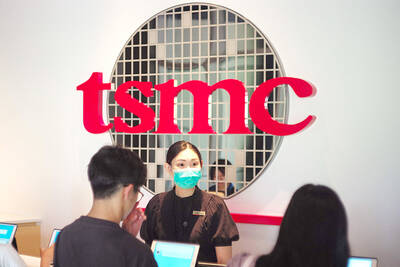Philippine and South Korean stocks entered technical bull markets, rising more than 20 percent from lows reached just weeks ago, as investor sentiment was buoyed by a slowing death toll in some of the world’s COVID-19 hotspots.
Markets were also optimistic about Saudi Arabia, Russia and other large oil producers moving to negotiate a deal to stem a historic price crash.
In South Korea, the KOSPI gained 3.9 percent to close 23 percent above its March 19 low. Samsung Electronics Co was the biggest boost to the measure, rising 3.6 percent ahead of its preliminary earnings report today.
“While South Korea remains susceptible to implications of external weakness, the region had been seen as one ‘flattening the curve’ without taking more stringent and disruptive containment measures,” said Jingyi Pan, a market strategist at IG Asia Pte in Singapore. “Moving further down the COVID-19 curve, this had thereby seen improved sentiment for the country.”
The Philippine Stock Exchange Index yesterday rose 4.2 percent, 20.5 percent above an eight-year low on March 19. The gains were helped by anticipation that a lockdown to contain the pandemic would be extended by two weeks, easing concerns of the quarantine being lifted prematurely.
“Improved global sentiment is the main catalyst and that’s driven by optimism Russia and OPEC will reach a deal cutting back production,” Papa Securities Corp strategist Manny Cruz said. “The Philippines and Indonesia are leading the climb to bull territory for these were the hardest hit markets amid the virus sell-off.”
Indonesian shares also flirted with bull territory, as Asia’s regional benchmark climbed 2.5 percent, the most in about two weeks.
The Jakarta Composite Index jumped by as much as 3.8 percent, pushing its gain from its March 24 low to more than 20 percent, meeting the technical definition of a bull market.
Some investors might be taking the depressed valuations and share prices as an opportunity to buy into the long-term prospects for the Southeast Asia’s biggest economy, said Thendra Crisnanda, head of research at PT MNC Sekuritas.
“This roller-coaster ride of the Indonesian market has been amazing, although fundamentally this upswing cannot be explained with the companies facing downward earnings revisions this year,” Crisnanda said. “One possible explanation is if there are active funds who have conviction on the Indonesian market and are buying stocks on the dip.”
While strong, the gains could still prove to be merely relief rallies. The Philippine Stock Exchange Index is still 33 percent below its high on July 15 last year. The Jakarta Composite Index is 27 percent off from its peak in April last year and the KOSPI is still about 21 percent down from its Jan. 22 high.
“With a very light calendar globally today, there is enough momentum to keep the equity rally running through the course of the day and also into European time,” Jeffrey Halley, senior market analyst at Oanda Asia Pacific Pte, wrote in a note. “All bets are off after that although I could see a couple of days of positive sentiment ahead, especially if those mortality rates keep falling.”

Taiwan Transport and Storage Corp (TTS, 台灣通運倉儲) yesterday unveiled its first electric tractor unit — manufactured by Volvo Trucks — in a ceremony in Taipei, and said the unit would soon be used to transport cement produced by Taiwan Cement Corp (TCC, 台灣水泥). Both TTS and TCC belong to TCC International Holdings Ltd (台泥國際集團). With the electric tractor unit, the Taipei-based cement firm would become the first in Taiwan to use electric vehicles to transport construction materials. TTS chairman Koo Kung-yi (辜公怡), Volvo Trucks vice president of sales and marketing Johan Selven, TCC president Roman Cheng (程耀輝) and Taikoo Motors Group

Among the rows of vibrators, rubber torsos and leather harnesses at a Chinese sex toys exhibition in Shanghai this weekend, the beginnings of an artificial intelligence (AI)-driven shift in the industry quietly pulsed. China manufactures about 70 percent of the world’s sex toys, most of it the “hardware” on display at the fair — whether that be technicolor tentacled dildos or hyper-realistic personalized silicone dolls. Yet smart toys have been rising in popularity for some time. Many major European and US brands already offer tech-enhanced products that can enable long-distance love, monitor well-being and even bring people one step closer to

RECORD-BREAKING: TSMC’s net profit last quarter beat market expectations by expanding 8.9% and it was the best first-quarter profit in the chipmaker’s history Taiwan Semiconductor Manufacturing Co (TSMC, 台積電), which counts Nvidia Corp as a key customer, yesterday said that artificial intelligence (AI) server chip revenue is set to more than double this year from last year amid rising demand. The chipmaker expects the growth momentum to continue in the next five years with an annual compound growth rate of 50 percent, TSMC chief executive officer C.C. Wei (魏哲家) told investors yesterday. By 2028, AI chips’ contribution to revenue would climb to about 20 percent from a percentage in the low teens, Wei said. “Almost all the AI innovators are working with TSMC to address the

Malaysia’s leader yesterday announced plans to build a massive semiconductor design park, aiming to boost the Southeast Asian nation’s role in the global chip industry. A prominent player in the semiconductor industry for decades, Malaysia accounts for an estimated 13 percent of global back-end manufacturing, according to German tech giant Bosch. Now it wants to go beyond production and emerge as a chip design powerhouse too, Malaysian Prime Minister Anwar Ibrahim said. “I am pleased to announce the largest IC (integrated circuit) Design Park in Southeast Asia, that will house world-class anchor tenants and collaborate with global companies such as Arm [Holdings PLC],”